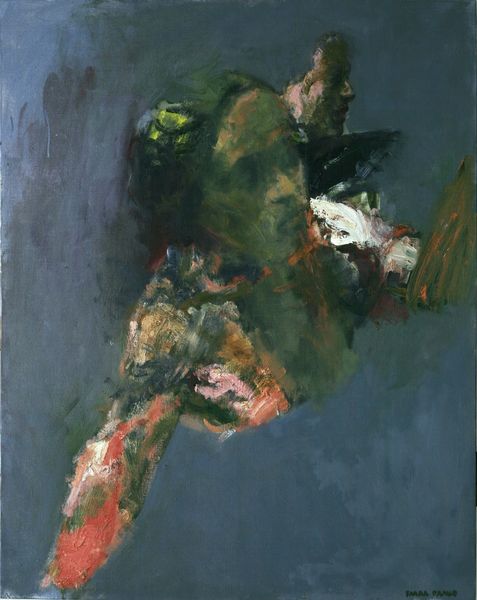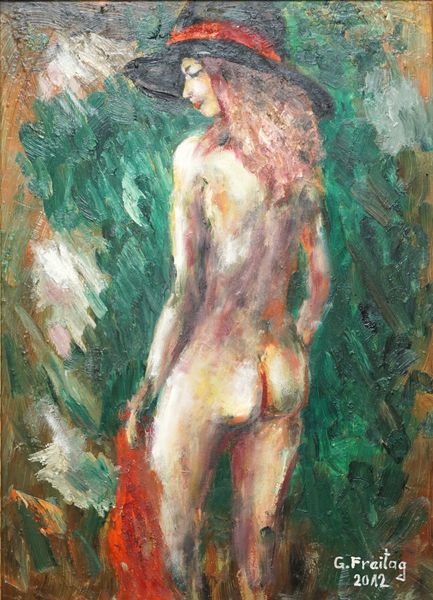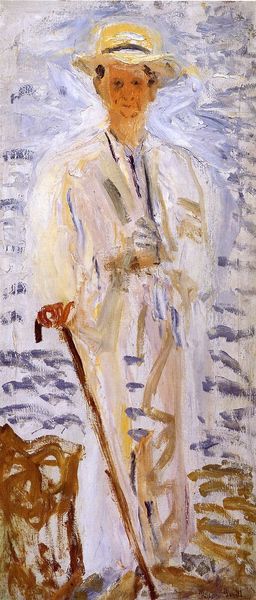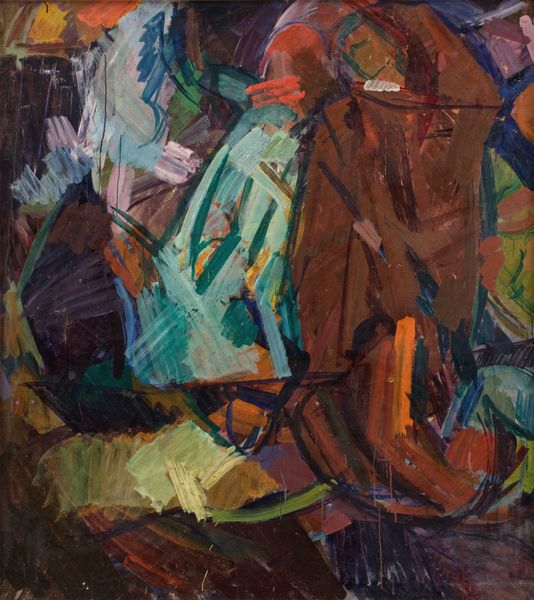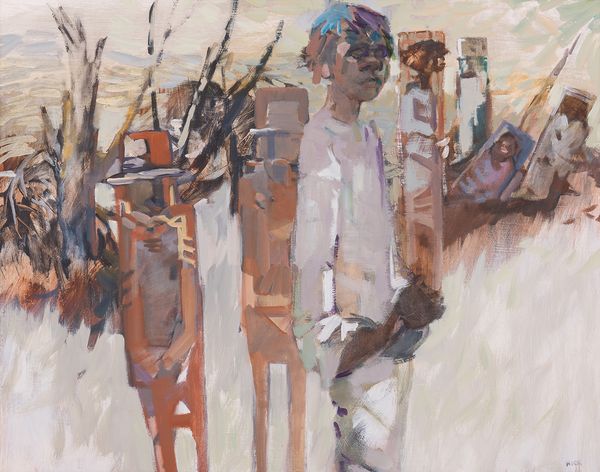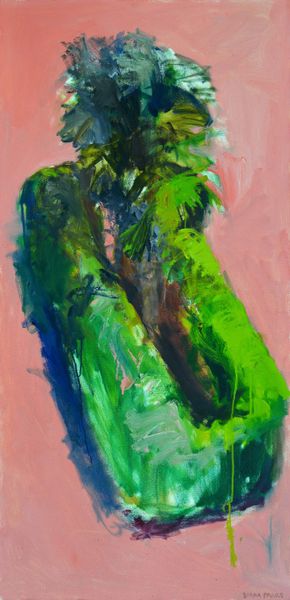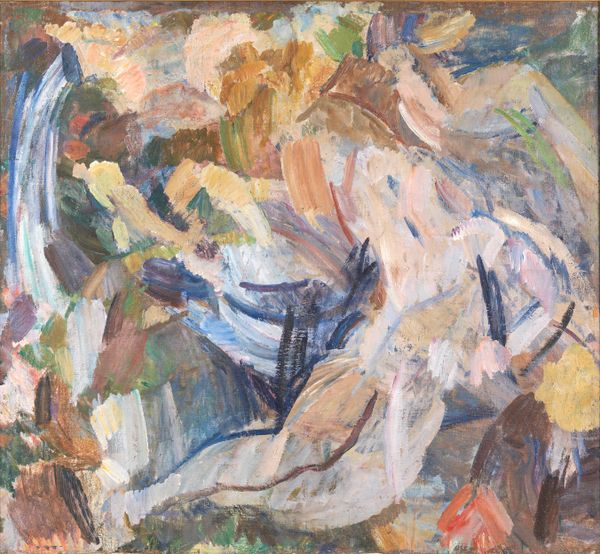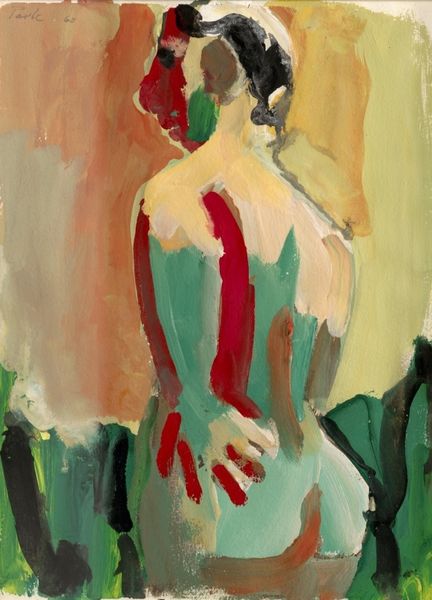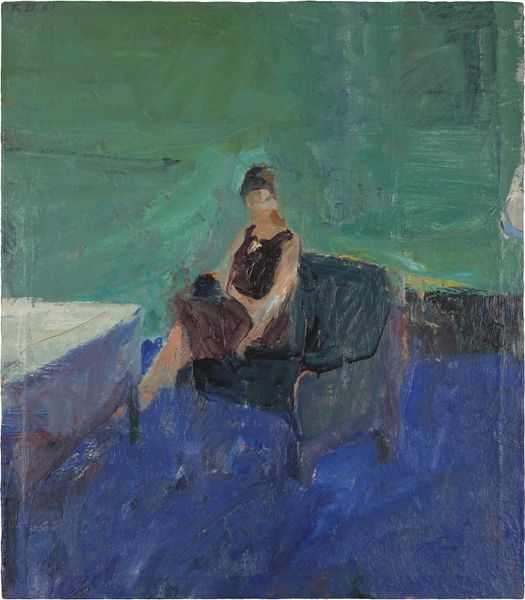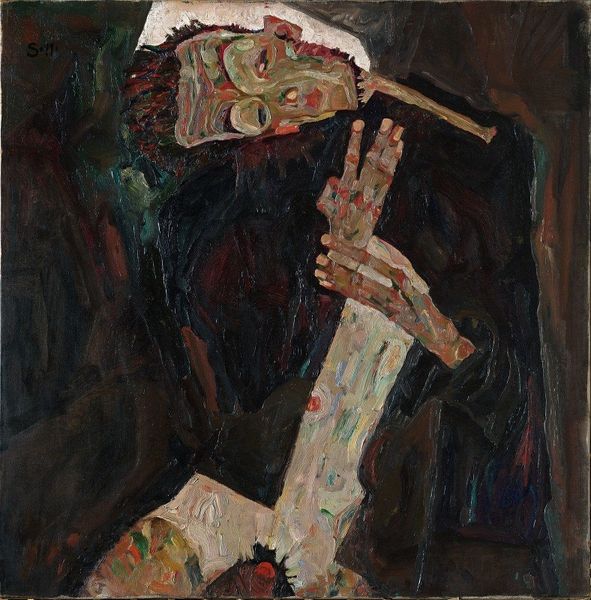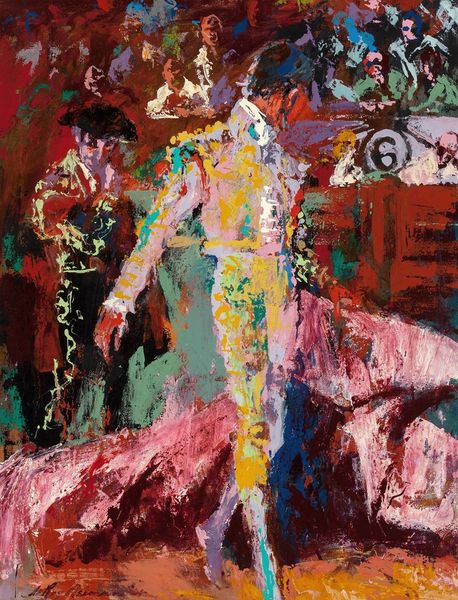
Copyright: ARTERA: FROM ARTIST
Editor: Here we have Wang Xinfu’s “Dunhou Back Shadow”, created in 2019 using oil paint, and in an impasto style. I am immediately struck by how vulnerable and exposed the figure appears, despite only seeing their back. What are your initial thoughts? Curator: It's interesting that you perceive vulnerability. Thinking about the historical context of nude figures, particularly in Western art, we often see a power dynamic at play – the artist, often male, observing and objectifying the female form. This piece, by a contemporary Chinese artist, begs the question: how does cultural context shift that power dynamic? Editor: So, the location of the artist and its audience, the cultural background, has bearing? Curator: Precisely. Are we looking at a critique, an homage, or something else entirely? Consider the museum itself – how does presenting this nude in a specific gallery affect its reception? Is it subverting traditional portrayals, or reinforcing certain expectations about the body and art? What statement does the institution intend to make? Editor: I hadn’t considered the role of the museum itself in shaping how we understand the piece. Thinking about who decides what art is seen, and how, really changes my understanding. Curator: And the abstract expressionist style pushes against realism, inviting viewers to engage with texture and form, rather than a straightforward representation. Does this abstraction amplify or diminish the figure’s vulnerability, in your opinion? Editor: I now see that this abstraction diffuses potential voyeurism. Thanks, reflecting on the setting and artistic statement opens up a wider interpretation! Curator: Indeed, these social and institutional lenses reveal that meaning isn't inherent to the artwork alone, it's co-created by the artist, the institution, and you, the viewer.
Comments
No comments
Be the first to comment and join the conversation on the ultimate creative platform.

